Savvy Traveller
While Europe’s most beautiful destinations fill with tourists during peak season, visiting at quieter – and cooler – times of year can make for a much richer travel experience
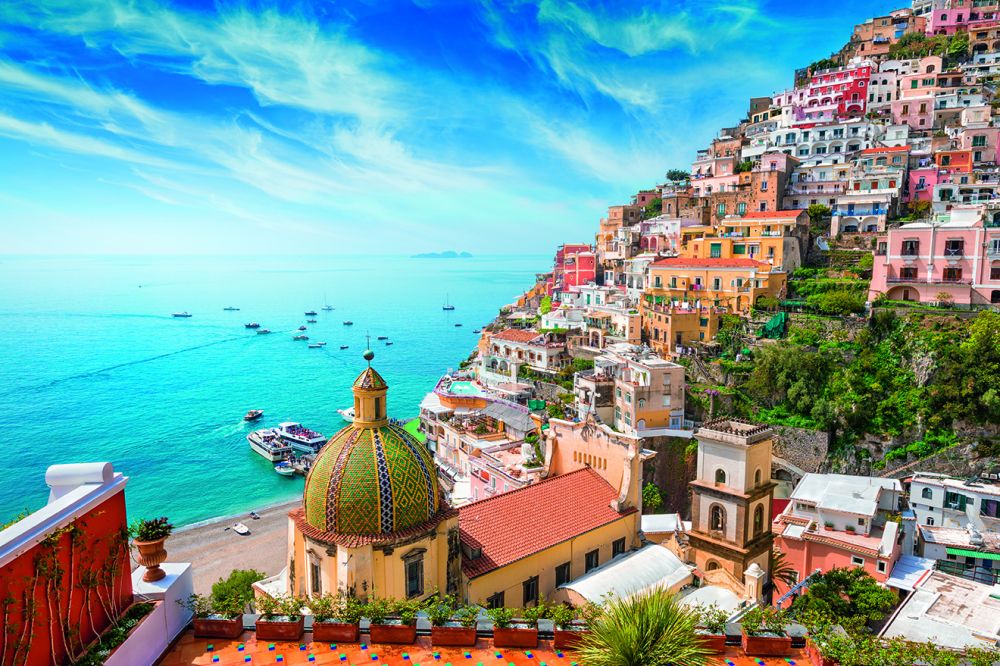
While Europe’s most beautiful destinations fill with tourists during peak season, visiting at quieter – and cooler – times of year can make for a much richer travel experience
Unobstructed by shuffling summer crowds, an autumn stroll
through the Plaka neighbourhood of Athens reveals why the
rustic quarter is affectionately called ‘the village within the city’. Like much of the Greek capital, a slower pace settles
on its streets once the temperatures cool. Duck under faded
bougainvillea to explore the area’s pocket-sized shops, taking
time to hunt out traditional textiles and artisan ceramics. Get
your fill of ancient artefacts at the new Acropolis Museum
before swapping Ionic temples with a visit to the Benaki
Museum of Greek Culture benaki.org to ogle traditional
dress and intricate Byzantine embroidery. Returning to the
21st century, jump on a bus to the street-art tattooed Exarchia neighbourhood. Here, CAN Christina Androulidaki gallery
can-gallery.com and Gallery Kourd gallerykourd.gr showcase
some of Greece’s top contemporary artists. Then, take lunch
Athenian-style at Ama Lachei 00 30 21 0384 5978, a modern
Greek restaurant that piles tables high with sharing plates.
If the urban sprawl gets too much, stretch your legs with a
walk between the Orthodox churches and ancient streets of Anafiotika to the tree-shaded First Cemetery of Athens, to admire the regal marble gravestones of Greek greats.
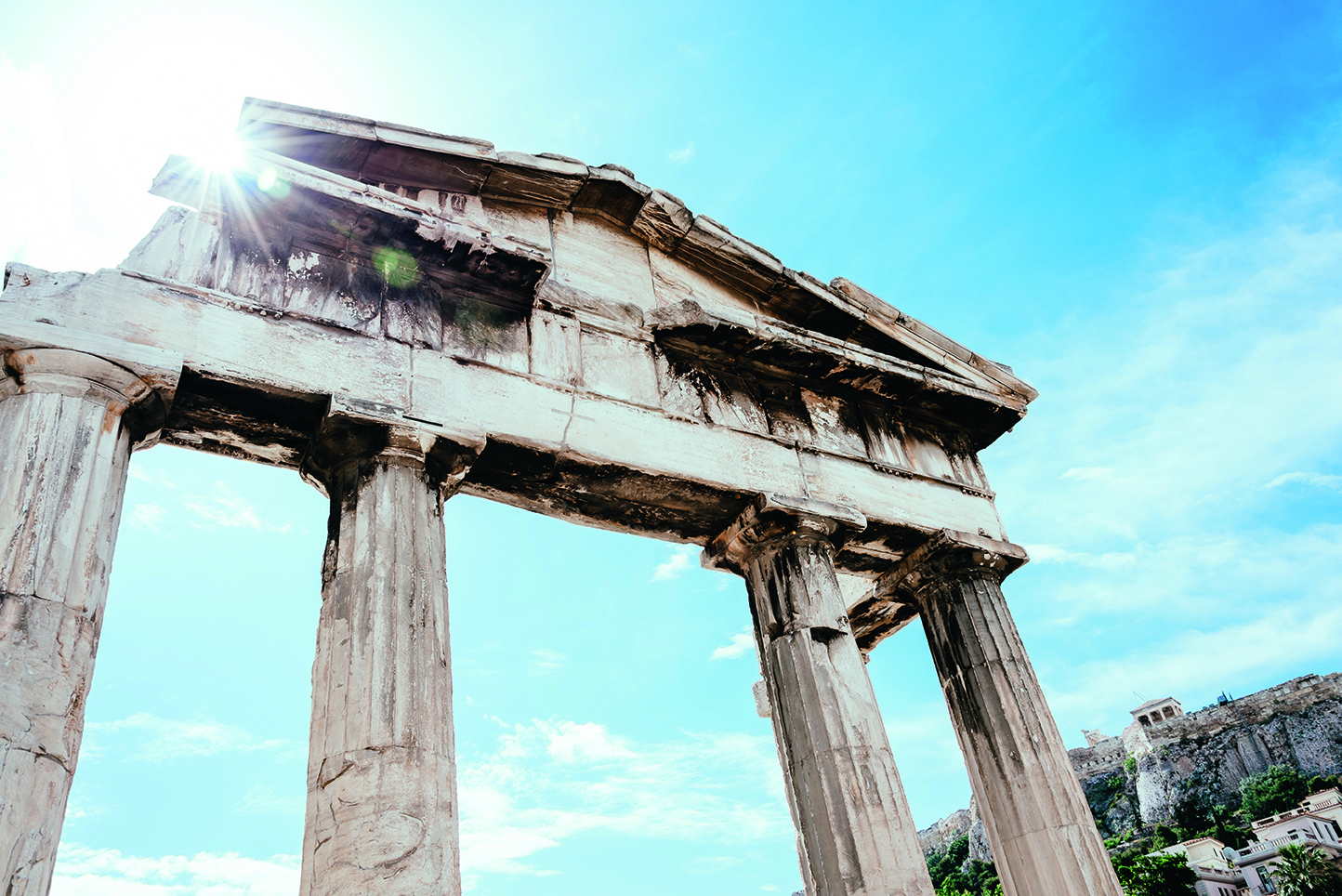
A short stroll from the Acropolis, the Perianth Hotel packs the essence of 21st-century Athens into its modernist 1930s walls. Doubles from £108. perianthhotel.com
The popularity of this city continues to grow. Yes, the ‘Game of
Thrones effect’ has made it an even bigger star but, frankly, it’s
long been busy. You could argue, for hundreds of years, in fact.
And the reason it is such a big attraction now is the same that
made it such a prosperous city: its location on the Adriatic
coast, equally beautiful and strategic. Dubrovnik today is
one of the most visited places across the Mediterranean.
The Old Port, with its terracotta-tiled roofs topping limestone
buildings set against the deep blue seas and (often) blue skies,
is a sight to behold. In the summer, not only can it be very hot, but the area around the port is most often teeming with
cruise passengers. By the time the autumn comes around, the
temperatures are pleasant (November’s average high is 17C)
and the streets emptier. Days in Dubrovnik are best spent
roaming the city walls and old streets to see the 15th-century
Onofrio Fountain and the nearby Franciscan Monastery,
visiting the Baroque Church of St Blaise and the Cathedral,
with its art-filled Treasury. All this is interspersed, of course,
with some of Europe’s best seafood and crisp Croatian wines.
Nautika nautikarestaurants.com is rightly regarded as one of the finest restaurants in town, with its beautifully presented
tasting menus from head chef Mario Bunda. For an end-of-
holiday blow-out, visit Proto esculaprestaurants.com for the finest hauls out of the Adriatic cooked to perfection.

Book into Villa Dubrovnik villa-dubrovnik.hr (doubles from £218), for five-star service and views, or, for a cosy boutique hotel in the Old Town, try guesthouse Forty Four fortyfourdubrovnik.com (doubles from £176).
From its origins as a Roman village to becoming the capital of Islamic Spain, Córdoba has always been a city of great riches. Today, it is also resplendent in terms of offering some of the country’s best food. Wander its cobbled streets, and you’ll see the scars of its tumultuous history, among the castles and cathedrals, walls and bridges. It barely seems changed from the days of the 10th century – when Córdoba was the largest city in Europe and a world centre for learning. The focal point of the city is the Mezquita mezquita-catedraldecordoba.es – the great Mosque-Cathedral of Córdoba, which was ordered in 784. Consequent Islamic rulers and, later, the Roman Catholic Church have added to a grandeur and opulence that defies belief even when you’re stood underneath gazing at it. No less striking is the Alcázar de los Reyes Cristianos alcazardelosreyescristianos.cordoba.es – a medieval fortress. The highlight is the garden filled with cypress and orange trees, ponds and fountains. In some ways, Córdoba is an unlikely place for a city of such importance. Yes, it sits on the Guadalquivir, upriver from Seville, but it’s also one of the warmest places in all of Europe. In summer, the average high is 36C and frequently reaches beyond 40C. Head there in November and you’ll find a more palatable 18C high. For fine dining, the Michelin-starred Noor noorrestaurant.es combines Moorish influence with exceptional ingredients.
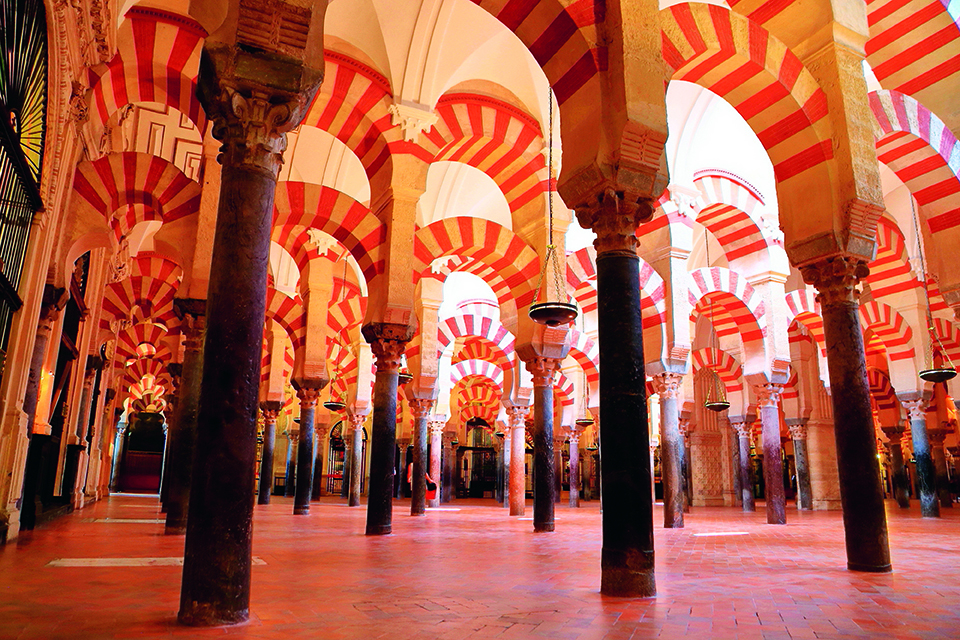
Boutique hotels are your best bet, especially those in the old town. Balcón de Córdoba has comfortable rooms with city views. Doubles from £184. balcondecordoba.com
Welcome to one of world’s finest cities – a metropolis that
has been home to some of the greatest empires ever seen.
With them they brought Istanbul the architectural wonders
of the Blue Mosque (aka Sultan Ahmed Mosque) and Hagia
Sophia, great centres of learning; and, under the Ottoman
court, ostentatious palaces. Its status is defined by its
geography. The city spans both sides of the Bosphorus strait,
the narrow channel that links the Black Sea and the Sea of
Marmara, forming the boundary between Europe and Asia.
As such, it pulls together countless influences in its culture
and its architecture, as well as its music and food. Istanbul
defies expectations at every turn of its winding, roller-coaster
alleyways. In the Beyoğlu district, for example, you’ll find a
wealth of shops selling mid-century modern furniture poised
alongside hip coffee shops. By evening, the streets fill with
the young population. And then there’s the food. When it’s
time to revive yourself after a day of exploring, don’t miss the freshly caught fish sandwiches which are quickly fried by
vendors on Galata Bridge, or the spectacular traditional cuisine
at Çiya ciya.com.tr in Kadıköy. Another top pick is Asitane
asitanerestaurant.com for its elevated Ottoman cuisine.
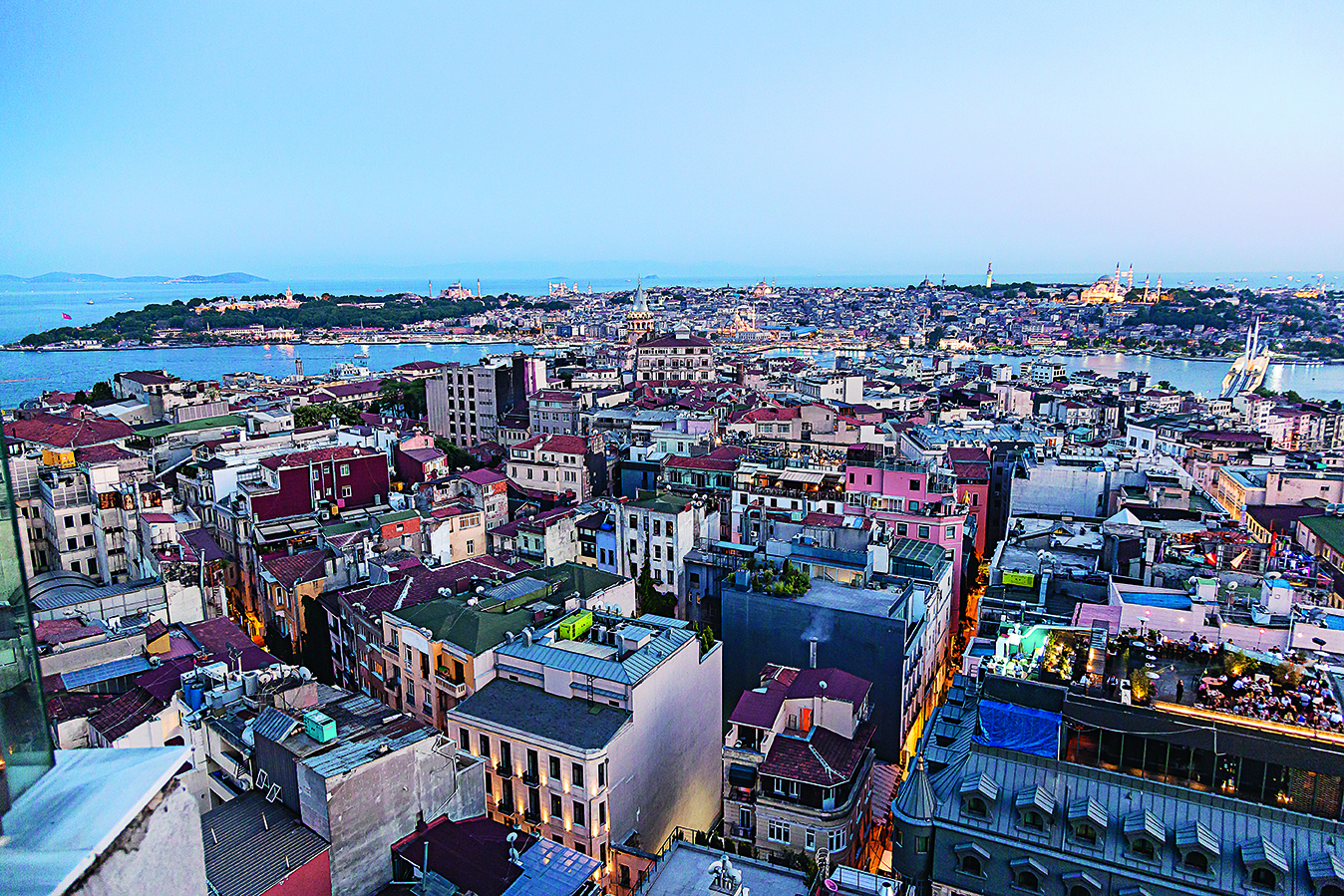
There’s a wide range of options here, from modern House Hotels househotels.com (doubles from £100), to the opulent Çiragan Palace Kempinski kempinski.com (doubles from £248) which overlooks the Bosphorus.
The supermodel of the Amalfi Coast is characterised by vertically stacked, cliff-hugging houses painted in pastel hues which resemble a handful of bonbons tumbling down the hillside. Like Sophia Loren, it’s seduced sailors, celebrities and jet-setters with its blinding good looks. But beauty brings adoring crowds and, in peak summer months, Positano’s steep narrow streets can feel claustrophobic. Visiting in November sees Spiaggia Beach – one of the largest and most glamorous stretches of sand in the Italian Riviera – practically empty. Iconic Florida-orange umbrellas stuck into silver sands the colour of a stack of Cartier bangles are readily available to perch under – ideal for enjoying an afternoon Aperol – and at nearly half the price they are in August (expect to pay £6 as opposed to £11). With temperatures tickling the 20s, seas are warm enough for an invigorating swim. Not all of Positano’s main draws will be open in November, but for those that are, unlike in high season, you won’t be queuing for hours nibbling on dry breadsticks. Open year-round (bar a small period stretching from late November to late December), La Cambusa lacambusapositano.com is perched above the main beach and has been serving fine seafood since the 1970s. Order the zuppa di pesce, Positano’s take on bouillabaisse.
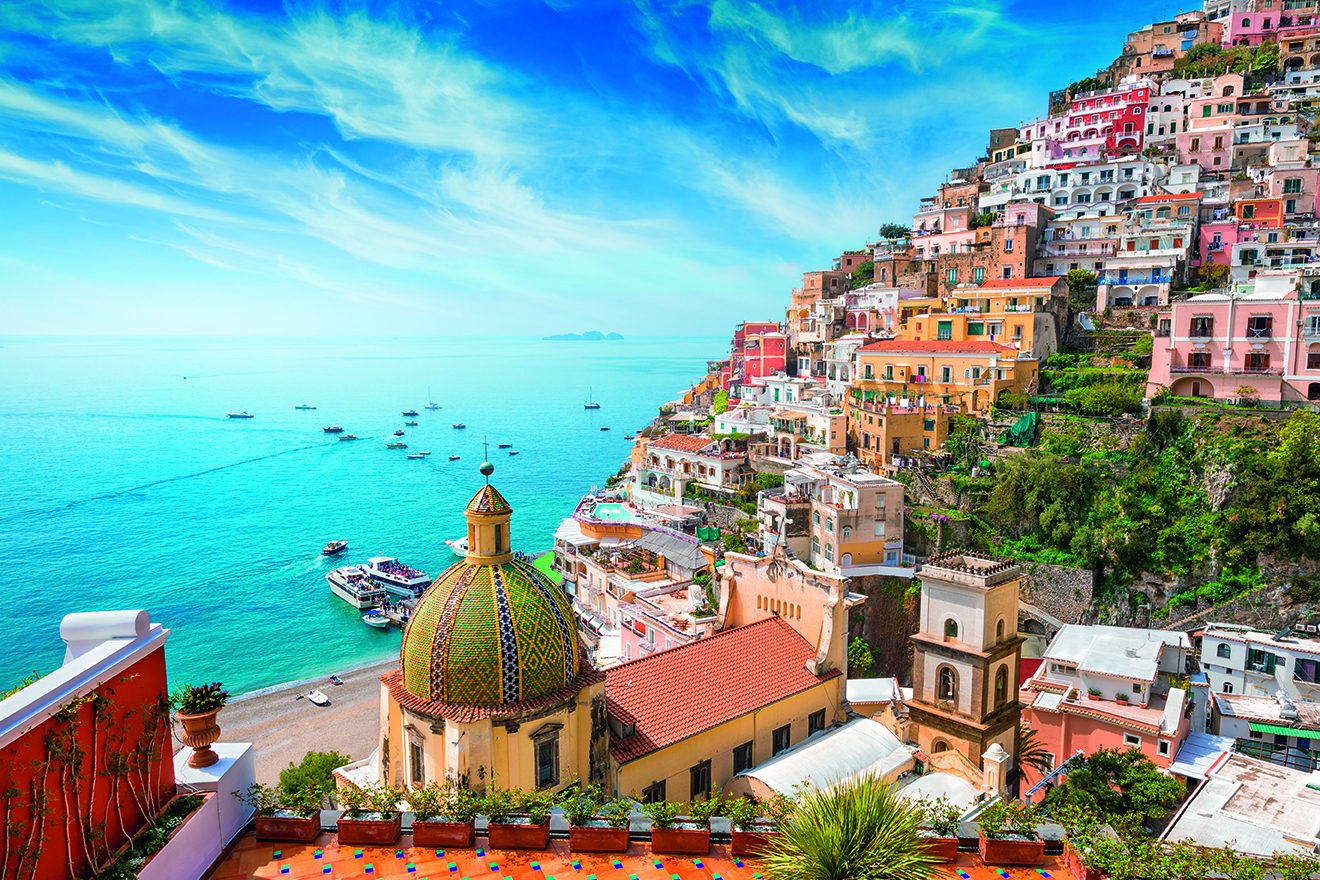
Imperati Suites by Alcione Residence has expansive rooms decorated in ocean blues and cheerful limoncello yellows to match the serene surrounds. Strong Italian espressos should be taken on the terrace of a morning. Doubles from £225. alcioneresidence.com
In a country full of atmospheric, whitewashed towns, Óbidos still manages to impress. The town – just over an hour’s drive from Lisbon – stands on the foothills that rise out of the Atlantic. It can trace its history back at least as far as Celt tribes, and later was a Phoenician trade centre. However, it is the buildings of the medieval period that dominate the town, notably Óbidos Castle and the crenellated walls that surrounded the old town. It’s one of the best-preserved medieval towns in Portugal, with its historic centre a maze of white houses, leafy courtyards and simple bars and restaurants. The Porta de Vila, with its chapel and painted tiles dating back to the 18th century, is a striking entrance to the town. Such a beautiful place does attract many tourists, but in the off season, when the weather is still pleasant, you’ll find the streets quieter. Better still, spend a night or two and enjoy some of the town’s renowned hospitality once the day-trippers have gone. Autumn is also the perfect season to try local speciality Ginja de Óbidos, a cherry-flavoured liquor, often served with a cherry at the bottom and in a cup made from chocolate, which you can then eat (of course). For food, try JamonJamon 00 351 916 208 162 for generous portions of Portuguese classics. For a more upmarket experience, head to Pousada Castelo Óbidos pousadas.pt in the castle.

The Pousada Castelo Óbidos pousadas.pt (doubles from £133) is an atmospheric choice. Alternatively, try The Literary Man theliteraryman.pt (doubles from £75) – a lovely spot, especially for book lovers.
Subscribe and view full print editions online... Subscribe